Jialin Yu
DebiasPI: Inference-time Debiasing by Prompt Iteration of a Text-to-Image Generative Model
Jan 28, 2025



Abstract:Ethical intervention prompting has emerged as a tool to counter demographic biases of text-to-image generative AI models. Existing solutions either require to retrain the model or struggle to generate images that reflect desired distributions on gender and race. We propose an inference-time process called DebiasPI for Debiasing-by-Prompt-Iteration that provides prompt intervention by enabling the user to control the distributions of individuals' demographic attributes in image generation. DebiasPI keeps track of which attributes have been generated either by probing the internal state of the model or by using external attribute classifiers. Its control loop guides the text-to-image model to select not yet sufficiently represented attributes, With DebiasPI, we were able to create images with equal representations of race and gender that visualize challenging concepts of news headlines. We also experimented with the attributes age, body type, profession, and skin tone, and measured how attributes change when our intervention prompt targets the distribution of an unrelated attribute type. We found, for example, if the text-to-image model is asked to balance racial representation, gender representation improves but the skin tone becomes less diverse. Attempts to cover a wide range of skin colors with various intervention prompts showed that the model struggles to generate the palest skin tones. We conducted various ablation studies, in which we removed DebiasPI's attribute control, that reveal the model's propensity to generate young, male characters. It sometimes visualized career success by generating two-panel images with a pre-success dark-skinned person becoming light-skinned with success, or switching gender from pre-success female to post-success male, thus further motivating ethical intervention prompting with DebiasPI.
Structured Learning of Compositional Sequential Interventions
Jun 09, 2024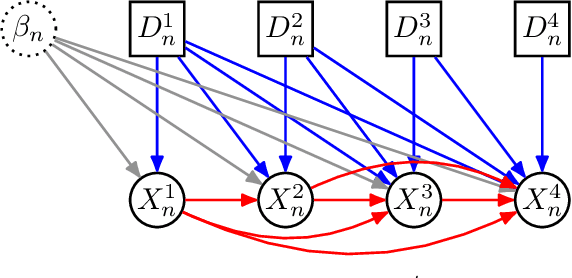


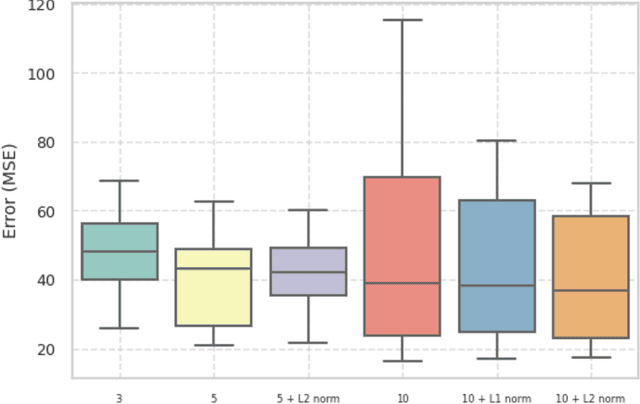
Abstract:We consider sequential treatment regimes where each unit is exposed to combinations of interventions over time. When interventions are described by qualitative labels, such as ``close schools for a month due to a pandemic'' or ``promote this podcast to this user during this week'', it is unclear which appropriate structural assumptions allow us to generalize behavioral predictions to previously unseen combinatorial sequences. Standard black-box approaches mapping sequences of categorical variables to outputs are applicable, but they rely on poorly understood assumptions on how reliable generalization can be obtained, and may underperform under sparse sequences, temporal variability, and large action spaces. To approach that, we pose an explicit model for \emph{composition}, that is, how the effect of sequential interventions can be isolated into modules, clarifying which data conditions allow for the identification of their combined effect at different units and time steps. We show the identification properties of our compositional model, inspired by advances in causal matrix factorization methods but focusing on predictive models for novel compositions of interventions instead of matrix completion tasks and causal effect estimation. We compare our approach to flexible but generic black-box models to illustrate how structure aids prediction in sparse data conditions.
Intervention Generalization: A View from Factor Graph Models
Jun 06, 2023Abstract:One of the goals of causal inference is to generalize from past experiments and observational data to novel conditions. While it is in principle possible to eventually learn a mapping from a novel experimental condition to an outcome of interest, provided a sufficient variety of experiments is available in the training data, coping with a large combinatorial space of possible interventions is hard. Under a typical sparse experimental design, this mapping is ill-posed without relying on heavy regularization or prior distributions. Such assumptions may or may not be reliable, and can be hard to defend or test. In this paper, we take a close look at how to warrant a leap from past experiments to novel conditions based on minimal assumptions about the factorization of the distribution of the manipulated system, communicated in the well-understood language of factor graph models. A postulated $\textit{interventional factor model}$ (IFM) may not always be informative, but it conveniently abstracts away a need for explicit unmeasured confounding and feedback mechanisms, leading to directly testable claims. We derive necessary and sufficient conditions for causal effect identifiability with IFMs using data from a collection of experimental settings, and implement practical algorithms for generalizing expected outcomes to novel conditions never observed in the data.
Deep Latent Variable Models for Semi-supervised Paraphrase Generation
Jan 05, 2023



Abstract:This paper explores deep latent variable models for semi-supervised paraphrase generation, where the missing target pair is modelled as a latent paraphrase sequence. We present a novel unsupervised model named variational sequence auto-encoding reconstruction (VSAR), which performs latent sequence inference given an observed text. To leverage information from text pairs, we introduce a supervised model named dual directional learning (DDL). Combining VSAR with DDL (DDL+VSAR) enables us to conduct semi-supervised learning; however, the combined model suffers from a cold-start problem. To combat this issue, we propose to deal with better weight initialisation, leading to a two-stage training scheme named knowledge reinforced training. Our empirical evaluations suggest that the combined model yields competitive performance against the state-of-the-art supervised baselines on complete data. Furthermore, in scenarios where only a fraction of the labelled pairs are available, our combined model consistently outperforms the strong supervised model baseline (DDL and Transformer) by a significant margin.
Religion and Spirituality on Social Media in the Aftermath of the Global Pandemic
Dec 11, 2022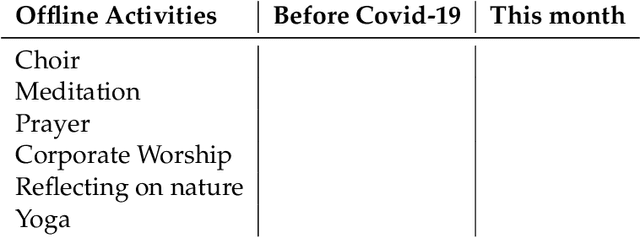
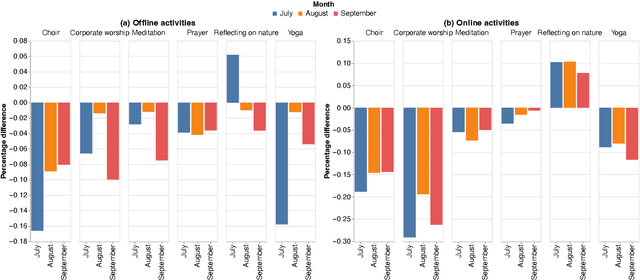
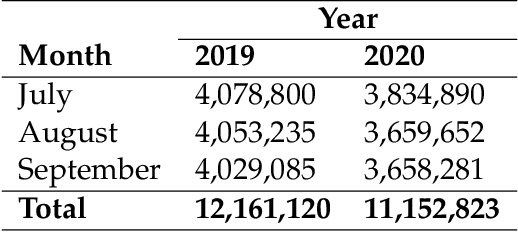
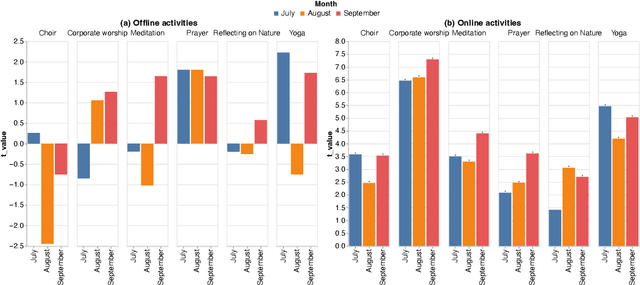
Abstract:During the COVID-19 pandemic, the Church closed its physical doors for the first time in about 800 years, which is, arguably, a cataclysmic event. Other religions have found themselves in a similar situation, and they were practically forced to move online, which is an unprecedented occasion. In this paper, we analyse this sudden change in religious activities twofold: we create and deliver a questionnaire, as well as analyse Twitter data, to understand people's perceptions and activities related to religious activities online. Importantly, we also analyse the temporal variations in this process by analysing a period of 3 months: July-September 2020. Additionally to the separate analysis of the two data sources, we also discuss the implications from triangulating the results.
Incorporating Emotions into Health Mention Classification Task on Social Media
Dec 09, 2022Abstract:The health mention classification (HMC) task is the process of identifying and classifying mentions of health-related concepts in text. This can be useful for identifying and tracking the spread of diseases through social media posts. However, this is a non-trivial task. Here we build on recent studies suggesting that using emotional information may improve upon this task. Our study results in a framework for health mention classification that incorporates affective features. We present two methods, an intermediate task fine-tuning approach (implicit) and a multi-feature fusion approach (explicit) to incorporate emotions into our target task of HMC. We evaluated our approach on 5 HMC-related datasets from different social media platforms including three from Twitter, one from Reddit and another from a combination of social media sources. Extensive experiments demonstrate that our approach results in statistically significant performance gains on HMC tasks. By using the multi-feature fusion approach, we achieve at least a 3% improvement in F1 score over BERT baselines across all datasets. We also show that considering only negative emotions does not significantly affect performance on the HMC task. Additionally, our results indicate that HMC models infused with emotional knowledge are an effective alternative, especially when other HMC datasets are unavailable for domain-specific fine-tuning. The source code for our models is freely available at https://github.com/tahirlanre/Emotion_PHM.
Multi-task Learning for Personal Health Mention Detection on Social Media
Dec 09, 2022Abstract:Detecting personal health mentions on social media is essential to complement existing health surveillance systems. However, annotating data for detecting health mentions at a large scale is a challenging task. This research employs a multitask learning framework to leverage available annotated data from a related task to improve the performance on the main task to detect personal health experiences mentioned in social media texts. Specifically, we focus on incorporating emotional information into our target task by using emotion detection as an auxiliary task. Our approach significantly improves a wide range of personal health mention detection tasks compared to a strong state-of-the-art baseline.
INTERACTION: A Generative XAI Framework for Natural Language Inference Explanations
Sep 02, 2022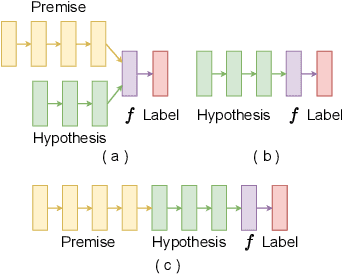
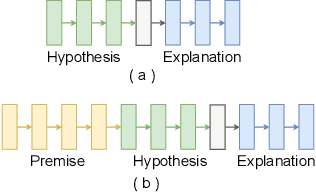
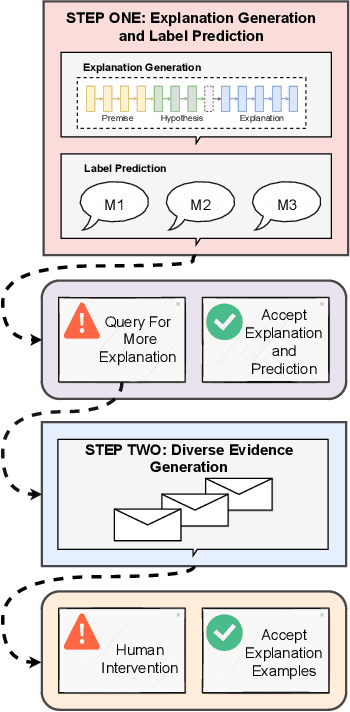
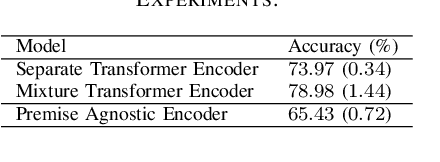
Abstract:XAI with natural language processing aims to produce human-readable explanations as evidence for AI decision-making, which addresses explainability and transparency. However, from an HCI perspective, the current approaches only focus on delivering a single explanation, which fails to account for the diversity of human thoughts and experiences in language. This paper thus addresses this gap, by proposing a generative XAI framework, INTERACTION (explaIn aNd predicT thEn queRy with contextuAl CondiTional varIational autO-eNcoder). Our novel framework presents explanation in two steps: (step one) Explanation and Label Prediction; and (step two) Diverse Evidence Generation. We conduct intensive experiments with the Transformer architecture on a benchmark dataset, e-SNLI. Our method achieves competitive or better performance against state-of-the-art baseline models on explanation generation (up to 4.7% gain in BLEU) and prediction (up to 4.4% gain in accuracy) in step one; it can also generate multiple diverse explanations in step two.
Colonoscopy polyp detection with massive endoscopic images
Feb 21, 2022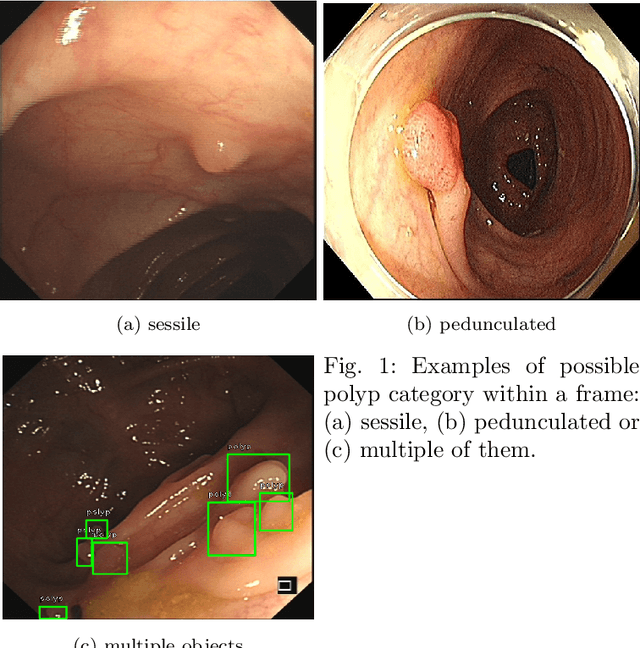
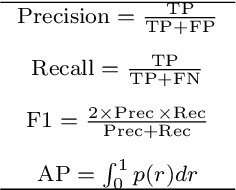


Abstract:We improved an existing end-to-end polyp detection model with better average precision validated by different data sets with trivial cost on detection speed. Our previous work on detecting polyps within colonoscopy provided an efficient end-to-end solution to alleviate doctor's examination overhead. However, our later experiments found this framework is not as robust as before as the condition of polyp capturing varies. In this work, we conducted several studies on data set, identifying main issues that causes low precision rate in the task of polyp detection. We used an optimized anchor generation methods to get better anchor box shape and more boxes are used for detection as we believe this is necessary for small object detection. A alternative backbone is used to compensate the heavy time cost introduced by dense anchor box regression. With use of the attention gate module, our model can achieve state-of-the-art polyp detection performance while still maintain real-time detection speed.
Exploring Bayesian Deep Learning for Urgent Instructor Intervention Need in MOOC Forums
Apr 26, 2021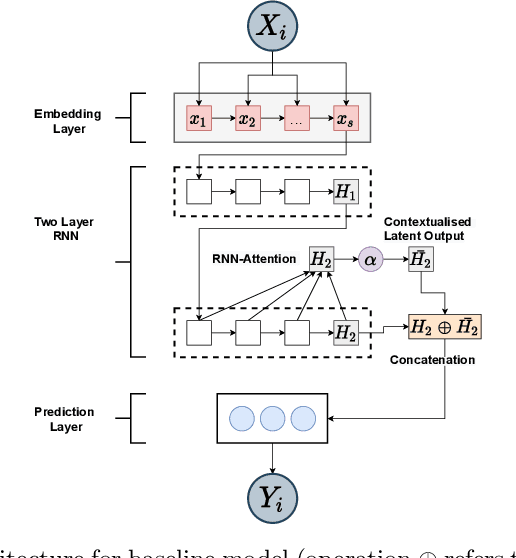

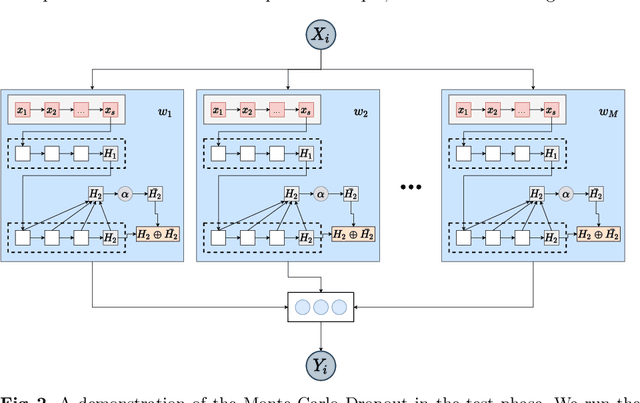

Abstract:Massive Open Online Courses (MOOCs) have become a popular choice for e-learning thanks to their great flexibility. However, due to large numbers of learners and their diverse backgrounds, it is taxing to offer real-time support. Learners may post their feelings of confusion and struggle in the respective MOOC forums, but with the large volume of posts and high workloads for MOOC instructors, it is unlikely that the instructors can identify all learners requiring intervention. This problem has been studied as a Natural Language Processing (NLP) problem recently, and is known to be challenging, due to the imbalance of the data and the complex nature of the task. In this paper, we explore for the first time Bayesian deep learning on learner-based text posts with two methods: Monte Carlo Dropout and Variational Inference, as a new solution to assessing the need of instructor interventions for a learner's post. We compare models based on our proposed methods with probabilistic modelling to its baseline non-Bayesian models under similar circumstances, for different cases of applying prediction. The results suggest that Bayesian deep learning offers a critical uncertainty measure that is not supplied by traditional neural networks. This adds more explainability, trust and robustness to AI, which is crucial in education-based applications. Additionally, it can achieve similar or better performance compared to non-probabilistic neural networks, as well as grant lower variance.
 Add to Chrome
Add to Chrome Add to Firefox
Add to Firefox Add to Edge
Add to Edge